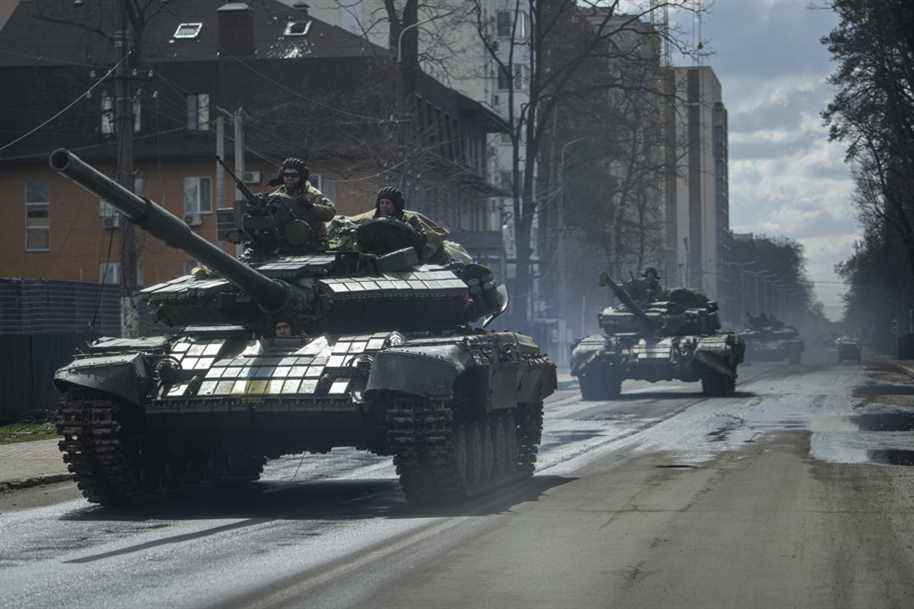(Washington) Armored vehicles, artillery, helicopters: Joe Biden gave the green light on Wednesday to massive new military aid to Ukraine, with heavier equipment than that delivered so far.
Updated yesterday at 5:21 p.m.
During a phone call Wednesday with his Ukrainian counterpart Volodymyr Zelensky, the American president announced to him that he had released a new tranche of aid worth 800 million dollars, according to a press release from the White House.
These new American deliveries will include some of the “very effective equipment that we have already delivered” to Ukraine, but also “new capabilities”, including “artillery systems” and “armoured personnel carriers”, said the US executive.
Pentagon spokesman John Kirby released a list of the equipment, saying it is from US military inventory and all are immediately available and will be delivered “as soon as possible”.
These are 18 M777 Howitzer guns, latest-generation artillery pieces used until recently by the American army in Afghanistan, accompanied by 40,000 155 mm shells, 10 AN/TPQ36 mobile anti-artillery radars and two AN/MPQ64 “Sentinel” anti-aircraft radars.
In addition, this new batch includes 300 Switchblade “kamikaze” drones, as well as 500 Javelin missiles and “thousands of other anti-tank systems”, in addition to 200 M113 armored personnel carriers and 100 Humvee light armored vehicles, said Mr Kirby.
Joe Biden has also given the green light to the transfer of additional helicopters. These are 11 Soviet-made Mi-17 helicopters that were intended for the Afghan army, before it capitulated to the Taliban.
Some American media have assured that these helicopters were removed from the list after appearing on it, and White House spokeswoman Jen Psaki was careful to note that this hesitation was due to the Ukrainian side and not to Washington.
“For a while they weren’t very clear about their desire to receive more helicopters,” she told reporters. “Today they said they wanted them.”
Donbass
This is the first time the Biden administration has provided artillery to Ukraine, Kirby noted, explaining that the battle for Donbass will be different from that of Kyiv, as Russian forces are less dispersed than in the past. start of the invasion and that the terrain in the east of the country is different.
“This part of Ukraine is a bit like Kansas, it’s a bit flatter, a bit more open” than in the north, he explained. “It’s the kind of place where you can expect the Russians to use tanks and heavy artillery to get to their objectives before sending in the soldiers.”
Kyiv has called on the population of these regions to flee as soon as possible, before the Russian army launches a major assault for full control of Donbass, which Ukrainian troops and their pro-Russian separatist enemies have shared since 2014.
At a time when the Russian army is poised to take control of the strategic port of Mariupol, on the Sea of Azov, and risks extending its offensive from the Black Sea, the new tranche of military aid from Washington also includes unmanned coastal defense vessels, the number of which is not specified.
These floating “drones”, which the US Navy is just beginning to equip, are designed in particular for anti-mine dredging, but they can also be equipped with sensors for maritime and underwater surveillance.
The United States has so far been reluctant to deliver the heavy equipment requested by the Ukrainians, arguing that this would only further fuel tensions between Washington and Moscow, with the risk of the Americans being seen as a party to the war. .
The White House, however, seemed to recently abandon the distinction it made between the delivery of “defensive” equipment, which it authorized, and “offensive”, which it refused to provide.
The United States has given Ukraine the bulk of the international military aid Kyiv has received since the fall.
The total amount of this military assistance, before Wednesday’s announcement, reached 2.4 billion dollars.
Analysts say Russian President Vladimir Putin, mired in the face of fierce Ukrainian resistance, wants to secure a victory in Donbass ahead of the May 9 military parade in Red Square marking the Soviet victory over the Nazis in 1945.
